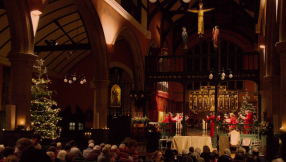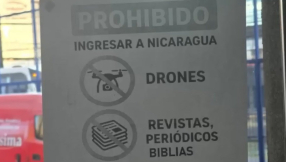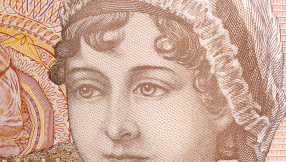Exploring Israel Part 1
Israel is a modern yet ancient land. The road signs were erected by a state which is little more than 60 years old, yet one which represents over 3000 years of history.
Places read about in the Bible, seemingly far off, become very real destinations. ‘Caesarea,’ turn right, ‘Mt Carmel’ straight on.
Turn right at the next junction! As I drove along the coastal plain of Israel, I thought about what it would have been like for Peter walking to meet Cornelius or what Paul would have seen as he was transferred from Jerusalem with an escort of 400 Roman body guards on horseback!
Israel is also a controversial land, historically and presently. Empires have come and gone. In May 1948, its name was decided only moments before it declared a state by Ben Gurion.
During the course of its history, Jerusalem has been destroyed twice, besieged 23 times, attacked 52 times, and captured and recaptured 44 times.
Alongside warriors, pilgrims have been visiting for thousands of years. Jerusalem is a holy city for three of the world's monotheistic faiths. With an eye on the commercial potential, holy sites were soon established to commemorate particular events, many of which are marked by a church. The historical accuracy of such locations depends upon the ‘tradition’ behind their existence.
Visiting tourists should acquaint themselves with each site and the related traditions to help determine which to visit and which to avoid. With only four tour days, we stayed in a hotel within walking distance of the old city walls, with views of the Jaffa Gate and in the distance, the Mount of Olives.
To maximise the time, we hired a car and a guide – an Israeli ‘believer’ in Jesus.
Our tour began at the Mount of Olives, which offers the best vantage point over the Old City. As we drove up the hill, the vast Judean desert could be seen behind the Mount of Olives. On the other side is a panoramic view of the ancient walls - destroyed and rebuilt over the years - and the Temple Mount. Built by Herod the Great, the huge platform created a vast Temple court area upon which the Dome of the Rock now sits, directly over the site of Solomon’s Temple.
Our first stop on the Mount of Olives was Dominus Flevit, a Franciscan church which marks the site where Jesus is said to have wept over the city of Jerusalem and its pending destruction (Luke 19:37; 41-42). This prophecy was fulfilled in 70AD when the Romans, under Titus, torched the city and Temple.
Although built between 1953 and 1955 by the Italian architect Antonio Barluzzi, its tradition dates back to Crusader times.
Down the hillside and past the cemetery is the Church of the Paternoster, ‘Our Father’, marking the spot where Jesus taught the disciples to pray. Further down is the Garden of Gethsemane, an enclosed garden with an ancient oil press and olive trees more than a thousand years old. There is a strong ‘tradition’ for this being the sitewhere Jesus prayed and was arrested.
It is here that a real appreciation of the geography and Biblical descriptions converge. An understanding of what it meant for Jesus ‘to go up’ becomes apparent. The Mount of Olives drops down to the Valley of Kidron and rises steeply to the walls and Mercy Gate, which the Bible indicates Jesus passed through many times while he was in Jerusalem (Luke 19:28-48). This is no Welsh ‘valley’ as the British may understand the word.
The visitor also becomes aware of just how easy it would have been for Jesus to escape down the other side of the Mount of Olives to the Judean desert, where he could have remained at large for a long time, like David on the run from Saul.
Our tour of the Old City started at the Lions’ Gate, where the Israeli army entered Jerusalem in 1967 during the Six Day War. Nearby, in the Muslim Quarter is the start of the Via Dolorosa, or ‘walk of suffering,’ which marks each of the ‘stations’ of Jesus carrying the cross.
Starting at the site of the Antonia Fortress, now a Muslim elementary school, we traced it through the alleys of the Old City to the Church of the Holy Sepulchre, built by Constantine in 326 to mark the crucifixion and burial of Jesus.
Extremely ostentatious, the church is home to six denominations and has even witnessed fights involving church leaders.
The day ended at the Western Wall. The 40m long section is the most holy site for Jews, representing the closest accessible area to where the holy of holies existed inside the former Temple.
Following extensive excavations, it is now possible to walk underground along the full length of the 485m wall. Visitors should book in advance to avoid missing out on this spectacular experience. The tour of the tunnels was the perfect way to end an incredible first day and was one of the highlights of the whole tour.
Some helpful information
We travelled with Longwood Holidays on a package which included flight and hotel. We arranged our own tour guide through Arch Tourswho connected us with one of Israel’s largest tour operators Sar-El Tours Sar-El Tours. We hired a car with El Dan online . I recommend a guide for every day, even if driving yourself. You may just miss the Plains of Jezreel, Meggido, Valley of Jehoshophat as you drive along the motorway.
Links
Western Wall Museum
Yad Vashem
Garden Tomb
Sea of Galilee Boat
Bethlehem
Karios Palestine 2009
Reading
The better you know your Bible and your history (both ancient and modern), the more you will appreciate and understand the significance of each place you see.
Before going I highly recommend In the Steps of Jesus by Peter Walker. As a pocket guide while travelling, use Every Pilgrim's Guide to the Holy Land by Norman Wareham. It has Bible references listed under each destination.
Also, a mobile app of the Bible will ensure you can quickly look up references and read discreetly when required - our Bible was confiscated by Israeli security before we went on to Temple Mount.













